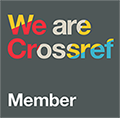Eğitimde Yenilikçi Çalışma Davranışı Ölçeği’nin Geliştirilmesi: Geçerlik ve Güvenirlik Çalışması
DOI:
https://doi.org/10.33308/26674874.2025393887Anahtar Kelimeler:
Yenilikçi Çalışma Davranışı- Öğretmen- Ölçek GeliştirmeÖzet
Bu araştırma, öğretmenlerin yenilikçi çalışma davranışlarını ölçmek için geliştirilen Eğitimde Yenilikçi Çalışma Davranışı Ölçeği’nin geçerlik ve güvenirlik analizlerini içermektedir. Araştırmanın örneklemi, 2024-2025 eğitim öğretim yılında İstanbul ili Pendik ilçesinde görev yapan 261 öğretmenden oluşmuştur. Araştırmada ölçme aracının kapsam ve görünüş geçerliği için uzmanlara başvurulmuş, yapı geçerliğini belirlemek için açımlayıcı faktör analizi (AFA) uygulanmıştır. AFA sonucunda toplam varyansın %71.4’ünü açıklayan, üç faktör ve 23 maddeden oluşan bir yapı elde edilmiştir. Faktörler “fikir üretimi”, “fikir için destek arayışı” ve “fikri uygulama” olarak adlandırılmıştır. Ölçeğin yapı geçerliğini test etmek için uygulanan doğrulayıcı faktör analizi sonucunda üç faktörlü yapının doğrulandığı görülmüştür. Ölçeğin güvenirliği kapsamında Cronbach Alfa iç tutarlılık katsayıları fikir üretimi boyutu için .89, fikir için destek arayışı boyutu için .95, fikri uygulama boyutu için .95 ve ölçeğin geneli için .97 olarak hesaplanmıştır. Ölçek maddelerine ilişkin analiz sonuçları da tüm maddelerin yeterince ayırt edici olduğunu göstermiştir. Bu sonuçlara göre geliştirilen Eğitimde Yenilikçi Çalışma Davranışı Ölçeği’nin geçerli ve güvenilir olduğu, öğretmenlerin yenilikçi çalışma davranışlarını ölçmek amacıyla kullanılabileceği söylenebilir.
İndirmeler
Referanslar
Amabile, T.M., Conti, R., Coon, H., Lazenby, J., & Herron, M. (1996). Assessing the work environment for creativity. Academy of Management Journal, 39(5), 1169-1184. DOI: https://doi.org/10.2307/256995
Amabile. T. M. (1997). Motivating creativity in organizations: On doing what you love and loving what you do. California Management Review, 40(1), 39-58. DOI: https://doi.org/10.2307/41165921
Balkar, B. (2015). The relationships between organizational climate, innovative behavior and job performance of teachers. International Online Journal of Educational Sciences, 7(2), 81-92. DOI: https://doi.org/10.15345/iojes.2015.02.007
Binnewies, C., Ohly, S., & Sonnentag, S. (2007). Taking personal initiative and communicating about ideas: What is important for the creative process and for idea creativity? European Journal of Work and Organizational Psychology, 16(4), 432-455. DOI: https://doi.org/10.1080/13594320701514728
Bos-Nehles, A., Bondarouk, T., & Nijenhuis, K. (2017). Innovative work behaviour in knowledge-intensive public sector organizations: The case of supervisors in the Netherlands fire services. The International Journal of Human Resource Management, 28(2), 379-398. DOI: https://doi.org/10.1080/09585192.2016.1244894
Brown, T. A. (2006). Confirmatory factor analysis for applied research. Guilford Press.
Browne, M. W., & Cudeck, R. (1993). Alternative ways of assessing model fit. In K. A. Bollen & J. S. Long (Eds.), Testing structural equation models (pp.136–162). Sage.
Bryman, A. & Cramer, D. (2001). Quantitative data analysis with SPSS release 10 for windows: A guide for social scientists. Routledge. DOI: https://doi.org/10.4324/9780203471548
Bunce, D., & West, M. (1995). Self perceptions and perceptions of group climate as predictors of individual innovation at work. Applied Psychology, 44(3), 199-215. DOI: https://doi.org/10.1111/j.1464-0597.1995.tb01076.x
Büyüköztürk, Ş. (2011). Sosyal bilimler için veri analizi el kitabı. Pegem A Yayıncılık.
Büyüköztürk, Ş., Kılıç Çakmak, E., Akgün, Ö. E., Karadeniz, Ş., & Demirel, F. (2018). Bilimsel araştırma yöntemleri (24. baskı). Pegem Akademi Yayınları. DOI: https://doi.org/10.14527/9789944919289
Çalışkan, A., Akkoç, İ., & Turunç, Ö. (2019). Yenilikçi davranış: Bir ölçek uyarlama çalışması. Uluslararası İktisadi ve İdari Bilimler Dergisi, 5(1), 94-111. DOI: https://doi.org/10.29131/uiibd.562196
Catio, M. (2019). Analyzing the competency of principals using the framework of the wales national standard for head teacher in boosting teacher‟s innovative behavior. International Journal of Managerial Studies and Research, 7(2), 1-6. DOI: https://doi.org/10.20431/2349-0349.0702001
Çimen, İ., & Yücel, C. (2017). Yenilikçi Davranış Ölçeği (YDÖ): Türk kültürüne uyarlama çalışması. Cumhuriyet Uluslararası Eğitim Dergisi, 6(3), 365-381.
Contreras, F., Espinosal, J., Dornberger, U., & Acosta, Y. A. C. (2017). Leadership and employees‟ innovative work behavior: Test of a mediation and moderation model. Asian Social Science, 13(9), 9–25. DOI: https://doi.org/10.5539/ass.v13n9p9
De Jong, J. P. J., & Den Hartog, D. N. (2007). How leaders influence employees‟ innovative behaviour. European Journal of Innovation Management, 10(1), 41–64. DOI: https://doi.org/10.1108/14601060710720546
De Jong, J. P. J., & Den Hartog, D. N. (2010). Measuring innovative work behaviour. Creativity and Innovation Management, 19(1), 23-36. DOI: https://doi.org/10.1111/j.1467-8691.2010.00547.x
De Jong, J., & Wennekers, S. (2008). Intrapreneurship conceptualizing entrepreneurial employee behaviour. Scales Research Reports H200802, EIM Business and Policy Research.
Dorenbosch, L., Engen, M., & Verhagen, M. (2005). On‐The‐Job innovation: the impact of job design and human resource management through production ownership. Creativity and Innovation Management, 14(2), 129-141. DOI: https://doi.org/10.1111/j.1476-8691.2005.00333.x
Eaude, T. (2011). Compliance or innovation? Enhanced pro-fessionalism as the route to improving learning and teaching. Education Review, 23(2), 49-57.
Eskici, M., & Çayak, S. (2023). The relationship between teachers' technology proficiencies and their levels of integrating technology into their lessons. Journal of Educational Technology & Online Learning, 6(4), 808-821. DOI: https://doi.org/10.31681/jetol.1331971
Etikariena, A., & Widyasari, P. (2020). Quality education to succeed the SDGs among college students through the role of learner empowerment and creative self-efficacy to develop innovative work behavior. E3S Web of Conferences, 211, 01018. DOI: https://doi.org/10.1051/e3sconf/202021101018
Hair, J. F., Black, W. C., Babin, B. J., Anderson, R. E., & Tatham, R. L. (2013). Multivariate data analysis (8th ed.). Pearson Education Limited.
Hakimian, F., Farid, H., Ismail, M.N., & Nair, P.K. (2016) Importance of commitment in encouraging employees’ innovative behaviour. Asia-Pacific Journal of Business Administration, 8, 70-83. DOI: https://doi.org/10.1108/APJBA-06-2015-0054
Harrington, D. (2009). Confirmatory factor analysis. Oxford University Press. DOI: https://doi.org/10.1093/acprof:oso/9780195339888.001.0001
Hoy, W. K., & Miskel, C. G. (2012). Educational administration theory, research and practice (Çev. Ed. Selahattin Turan). Nobel Yayıncılık.
Janssen, O. (2000). Job demands, perceptions of effort–reward fairness and innovative work behaviour. Journal of Occupational and Organizational Psychology, 73(3), 287-302. DOI: https://doi.org/10.1348/096317900167038
Janssen, O. (2003). Innovative behavior and job involvement at the price of conflict and less satisfactory relations with co-workers. Journal of Occupational and Organizational Psychology, 76, 347-364. DOI: https://doi.org/10.1348/096317903769647210
Janssen, O. (2004). How fairness perceptions make innovative behavior more or less stressful. Journal of Organizational Behavior, 25(2), 201-215. DOI: https://doi.org/10.1002/job.238
Kanter, R.M. (1988). When a thousand flowers bloom: Structural, collective, and social conditions for innovation in organizations. Research in Organizational Behavior, 10, 169-211.
Karasar, N. (2007). Bilimsel araştırma yöntemleri (17. baskı). Nobel Yayıncılık.
Khandwalla, P. N. (2006). Tools for enhancing Innovativeness in enterprises. Vikalpa, 31(1), 1-16. DOI: https://doi.org/10.1177/0256090920060101
Khikmah, L. (2019). Teachers‟ creativity in designing learning activities: Sustaining students’ motivation. English Review: Journal of English Education, 7(2), 85-92. DOI: https://doi.org/10.25134/erjee.v7i2.1639
Kline, R. B. (2011). Principles and practice of structural equation modeling (3rd ed.). Guilford Press.
Laursen, K., & Foss, N. J. (2013). Human resource management practices and innovation. Oxford Academic, 25, 505-529. DOI: https://doi.org/10.1093/oxfordhb/9780199694945.013.009
Leong, C. T., & Rasli, A. (2014). The Relationship between innovative work behavior on work role performance: An empirical study. Procedia-Social and Behavioral Sciences, 129, 592-600. DOI: https://doi.org/10.1016/j.sbspro.2014.03.717
Meyers, L.S., Gamst, G., & Guarino, A. (2006). Applied multivariate research: Design and interpretation. Sage.
Mumford, M.D. (2000). Managing creative people: Strategies and tactics for innovation. Human Resource Management Review, 10, 313-351. DOI: https://doi.org/10.1016/S1053-4822(99)00043-1
Nunnally, J.C. (1978). Psychometric theory (2nd Edition). McGraw-Hill.
OECD. (2018). The future of education and skills: Education 2030. OECD. https://www.oecd.org/en/about/directorates/directorate-for-education-and-skills.html
Pala, O., & Turan, N. (2020). Yenilikçi davranış ölçeğinin (YDÖ) Türkiye’ye uyarlama çalışması. Anadolu Üniversitesi Sosyal Bilimler Dergisi, 20(3), 65-80. DOI: https://doi.org/10.18037/ausbd.801853
Paulhus, D. L., & Vazire, S. (2007). The self-report method. In R. W. Robins, R. C. Fraley, and R. F. Krueger (Eds). Handbook of research methods in personality psychology (pp. 224-239). Guilford.
Schleicher, A. (2012). Preparing teachers and developing school leaders for the 21st century: lessons from around the world. OECD Publishing. DOI: https://doi.org/10.1787/9789264174559-en
Scott, S.G., & Bruce, R.A. (1994). Determinants of innovative behavior: a path model of individual innovation in the workplace. Academy of Management Journal, 37(3), 580- 607. DOI: https://doi.org/10.2307/256701
Shear, L., Gallagher, G., & Patel, D. (2011). Evolving educational ecosystems: executive summary of phase 1 ITL research results. Microsoft Corporation.
Sheskin, D. J. (2004). Handbook of parametric and nonparametric statistical procedures (3rd ed.). Chapman & Hall/CRC. DOI: https://doi.org/10.1201/9781420036268
Tabachnick, B.G., & Fidell, L.S. (2007). Using multivariate statistics. Pearson Education. Inc.
Tavşancıl, E. (2010). Tutumların ölçülmesi ve SPSS ile veri analizi. Nobel Yayın Dağıtım.
Tezbaşaran, A. (1996). Likert tipi ölçek geliştirme kılavuzu. Türk Psikologlar Derneği Yayınları.
Thurlings, M., Evers, A. T., & Vermeulen, M. (2015) Toward a model of explaining teachers‟ innovative behavior: A literature review. Review of Educational Research 85(3), 430- 471. DOI: https://doi.org/10.3102/0034654314557949
Töre, E. (2017). Entelektüel sermayenin yenilikçi davranışına etkisinin bilgi paylaşımı, öz yeterlilik ve iç denetim odağı perspektifinden incelenmesi üzerine bir araştırma [Yayımlanmamış doktora tezi]. İstanbul Üniversitesi.
Tura, B., & Akbaşlı, S. (2021). Öğretmen yenilikçiliğini etkileyen faktörler. Uluslararası Temel Eğitim Çalışmaları Dergisi, 2(1), 15-28.
Tura, B., & Akbaşlı, S. (2023). Yenilikçi çalışma davranışı ölçeğinin Türk kültürüne uyarlama çalışması. Mehmet Akif Ersoy Üniversitesi Eğitim Fakültesi Dergisi, 66, 189-212. DOI: https://doi.org/10.21764/maeuefd.1038526
Veenendaal, A., & Bondarouk, T. (2015). Perceptions of HRM and their effect on dimensions of innovative work behaviour: Evidence from a manufacturing firm. Management Revue, 26(2), 138–160. DOI: https://doi.org/10.5771/0935-9915-2015-2-138
Veneziano L., & Hooper J. (1997). A method for quantifying content validity of health-related questionnaires. American Journal of Health Behavior, 21(1), 67-70.
Waheed, A., Xiao-Ming, M., Ahmad, N., & Waheed, S. (2017). Impact of work engagement and innovative work behavior on organizational performance; moderating role of perceived distributive fairness. International Conference on Management Science and Engineering (ICMSE), 127-133. DOI: https://doi.org/10.1109/ICMSE.2017.8574390
Weiss, D. S., & Legrand, C. (2011). Innovative intelligence. Wiley.
West, M. A., & Farr, J. L. (1989). Innovation at work: Psychological perspectives. Social Behaviour, 4(1), 15–30.
West, M.A. (2002). Ideas are tenapenny: It’s teamimplementation not ideageneration that counts. Applied Psychology: An International Review, 51, 411-424. DOI: https://doi.org/10.1111/1464-0597.01006
Whaley, K. W. (1994). Leadership and teacher job satisfaction. NASSP Bulletin, 78(564), 46- 50. DOI: https://doi.org/10.1177/019263659407856410
Woodman, R. W., Sawyer, J. E., & Griffin, R. W. (1993). Toward a theory of organizational creativity. The Academy of Management Review, 18(2), 293–321. DOI: https://doi.org/10.2307/258761
Xerri, M. J., & Brunetto, Y. (2013). Fostering innovative behaviour: The importance of employee commitment and organisational citizenship behaviour. The International Journal of Human Resource Management, 24(16), 3163–3177. DOI: https://doi.org/10.1080/09585192.2013.775033
Yuan, F., & Woodman, R. W. (2010). Innovative behavior in the workplace: The role of performance and image outcome expectations. Academy of Management Journal, 53(2), 323-342. DOI: https://doi.org/10.5465/amj.2010.49388995
Zainal, M., & Matore, M. (2019). Factors influencing teachers‟ innovative behaviour: A systematic review. Creative Education, 10(12), 2869-2886. DOI: https://doi.org/10.4236/ce.2019.1012213
İndir
Yayınlanmış
Nasıl Atıf Yapılır
Sayı
Bölüm
Lisans
Telif Hakkı (c) 2025 Aykut Güneş- Murat Gürkan Gülcan

Bu çalışma Creative Commons Attribution-NonCommercial-NoDerivatives 4.0 International License ile lisanslanmıştır.
Sisteme yüklemiş olunan makalenin kapsamı, sunduğu bulgular ve sonucu ve yorumları konusunda Yaşadıkça Eğitim [YE] dergisi Sahibi, Editör, Editör Yardımcısı, Hakemler ve Editör Kurulu'nun hiçbir sorumluluk taşımadığını kabul ederim.
Makalenin özgün olduğunu, herhangi bir başka dergiye yayımlanmak üzere gönderilmediği, daha önce yayımlanmadığını Yaşadıkça Eğitim [YE] dergisi Editörlüğü'ne beyan ederim.
Başlığı belirtilen makalenin, 5846 sayılı Fikir ve Sanat Eserleri Yasasının 22. maddesi gereğince çoğaltma, 23. maddesi gereğince yayma ve 25. maddesi gereğince her türlü taşıyıcı materyal üzerinde veya elektronik ortamda kamuya iletim haklarını Yaşadıkça Eğitim [YE] dergisine karşılıksız, koşulsuz ve süresiz olarak devredildiği, makale ile ilgili devredilen hakların dilediği zaman, mekan ve koşullarda kullanmaya Yaşadıkça Eğitim [YE] dergisinin yayıncısı olarak İstanbul Kültür Üniversitesi'nin yetkili kılınacağını onaylarım.





